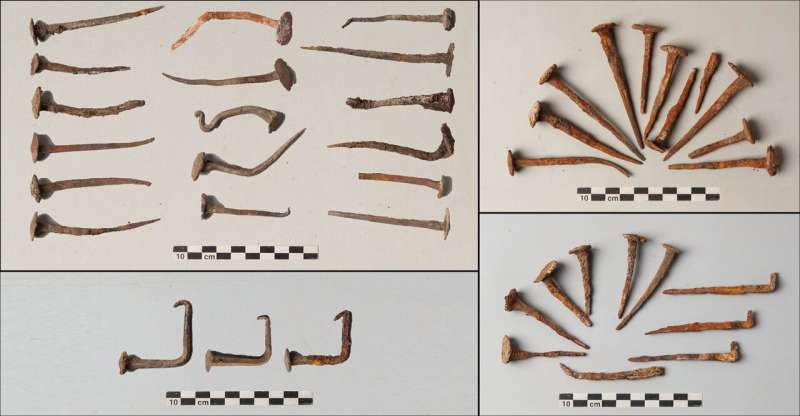March 14, 2023 report
Roman era gravesites with unusual funerary rites

Bob Yirka
news contributor

A team of archaeologists from KU Leuven and the Royal Belgium Institute of Natural Sciences, both in Belgium, reports unusual funerary practices by early Roman Empire–era people living in what is now a southwest part of Turkey. In their paper published in the journal Antiquity, the group describes the burial site and the artifacts found there.
The studied a site located at Sagalassos, and artifacts there have been dated back to approximately AD 100 to 150. Prior research has shown that it was occupied by the Romans from the fifth to 13th centuries, and had a Roman-style culture, including building in the style of Roman architecture. The site has a theater and a bath complex. The archaeologists were part of the Sagalassos Archaeological Research Project and were working on the outskirts of the dig site when they came across evidence of Roman-era cremations.
The artifacts revealed that the people of the time had performed cremations differently than others of the Roman era—instead of using a funeral pyre, collecting the remains and moving them somewhere else, the people in Sagalassos performed their cremations in place. Thus, there was no need to move them. They also found that items, such as intentionally bent nails, buried with the remains were unique. Also, unlike most other cremation sites of the time, the one at Sagalassos was sealed beneath a covering of lime and brick.

The research team suggests that unique burial rites were performed that were meant to prevent the person that had died from escaping. Those burying them were apparently afraid of retaliation of some sort, and thus used all means at their disposal to keep the deceased person safely in the ground.
The bent nails, for example, were likely used as a sort of "magic barrier"—they were placed all the way around the charred bones and ashes of the remains. Those involved in the burial appeared to have used lime as a means of keeping the person, or their spirit, from escaping from the ground, rather than for aesthetic reasons.
Written for you by our author —this article is the result of careful human work. We rely on readers like you to keep independent science journalism alive. If this reporting matters to you, please consider a (especially monthly). You'll get an ad-free account as a thank-you.
More information: Johan Claeys et al, Magical practices? A non-normative Roman imperial cremation at Sagalassos, Antiquity (2023).
Journal information: Antiquity
© 2023 Science X Network


















